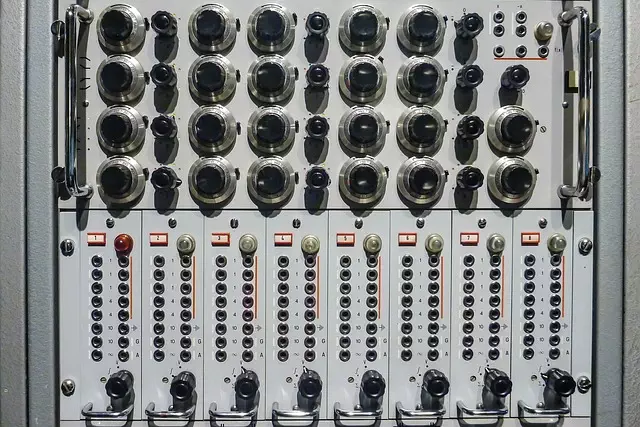Rodent infestations pose significant property damage and health risks, requiring proactive rodent control measures. Early detection through identifying signs like droppings, gnaw marks, and odors is crucial. Physical barriers, clean environments, and non-toxic methods are essential for effective rodent control. Traditional traps and poisons have drawbacks, prompting a shift towards eco-friendly alternatives. Homeowners can manage minor infestations DIY-style but severe cases require professional services. A multi-faceted approach combining cleanliness, sealing entry points, inspections, humane traps, and repellents ensures sustained rodent control.
Rodents like rats and mice can quickly turn into a home or business owner’s worst nightmare, causing damage and spreading diseases. Understanding these infestations is the first step in effective rodent control. This article guides you through everything you need to know about rodents, from identifying signs of an infestation to exploring various control methods. We’ll cover traditional traps and poisons, modern non-toxic solutions, DIY tips, professional services, and long-term strategies to keep your spaces rodent-free.
Understanding Rodent Infestations: Identifying Signs and Common Types of Rodents

Rodent infestations can be a significant problem for homeowners and businesses alike, impacting both property and health. Understanding the signs and common types of rodents is crucial for effective rodent control. Identifying an infestation early on is key to minimizing damage and preventing the spread of diseases. Look for visible signs such as droppings, gnaw marks, holes in walls or floors, and strange odours, which can indicate the presence of rats or mice.
There are several common types of rodents that can infiltrate your space, including rats (Rattus spp.) known for their agility and ability to thrive in urban environments, and mice (Mus musculus), smaller but equally invasive. Each species has unique habits and preferences, influencing where they tend to nest and what foods they seek. Recognizing these variations is essential when implementing rodent control measures, as it allows for tailored strategies that address the specific challenges posed by each type of rodent.
Effective Prevention Strategies: Creating a Barrier Against Unwanted Guests

To effectively prevent rodents like rats and mice from infiltrating your space, creating a robust barrier is key. This involves sealing off potential entry points—cracks, gaps, or openings larger than 1/4 inch—with materials like steel wool, caulk, or weatherstripping. Ensuring windows and doors fit tightly and using screen doors or vents with fine mesh can also deter rodents from finding their way in. Regular inspections are crucial to identifying and addressing any vulnerabilities before they become points of entry.
Beyond physical barriers, maintaining a clean environment is paramount for rodent control. Storing food in airtight containers, cleaning up crumbs and spills immediately, and keeping garbage bins securely sealed can eliminate attractive smells that draw rodents. Additionally, trimming vegetation and clearing debris from around the perimeter of your property creates less hiding spots and makes it harder for rodents to gain access.
Traditional Methods of Rodent Control: From Traps to Poisons

In the long-standing battle against rodents, traditional methods have been employed for centuries, primarily focusing on traps and poisons as powerful tools in rodent control. These conventional approaches offer direct and often immediate solutions to ridding areas of unwelcome visitors like rats and mice. One of the most well-known and widely used techniques is setting traps, which can be categorized into snap traps and live traps. Snap traps provide a quick kill method, while live traps capture rodents alive, allowing for relocation or subsequent killing.
Poisons, another traditional tactic, have been utilized to eliminate rodents by targeting their metabolic processes. Anticoagulant poisons have gained popularity due to their effectiveness in disrupting the clotting mechanism of rodent blood, leading to internal bleeding and eventual death. However, these methods come with significant drawbacks, including potential harm to non-target species, environmental impact, and health risks associated with handling toxic substances. As a result, many regions are now implementing stricter regulations around the use of such poisons, emphasizing the need for more humane and eco-friendly rodent control alternatives.
Modern Approach: Non-Toxic, Humane Solutions for Rodent Management

In today’s world, rodent control has evolved beyond traditional, often toxic methods. The modern approach emphasizes non-toxic, humane solutions for managing rodent populations. This shift reflects a growing awareness of the environmental and health impacts associated with conventional pesticides. Eco-friendly alternatives, such as repellents, traps, and habitat modification, are gaining popularity among professionals and homeowners alike.
These innovative approaches not only reduce risks to humans and pets but also help preserve ecosystems by minimizing exposure to harmful chemicals. By adopting non-toxic methods, we can effectively navigate rodent control while respecting the balance of nature. This trend is a step forward in ensuring a healthier environment for both urban and rural settings, making it an essential aspect of modern rodent management.
DIY vs Professional Services: When to Call in the Experts

When dealing with rodent issues, homeowners often face a choice between DIY methods and professional services. While DIY approaches to rodent control can be tempting as a cost-saving measure, there are several scenarios where enlisting the help of experts is beneficial for effective and long-lasting results.
One key consideration is the extent of the infestation. If rodents have already established themselves extensively in your home or property, professional rodent control services become indispensable. Experts possess specialized tools and knowledge to access hard-to-reach areas, identify entry points, and implement tailored strategies. They also offer safe and environmentally friendly solutions, ensuring your family’s well-being. Additionally, professionals provide ongoing support and maintenance plans to prevent future invasions, which can be more cost-effective in the long term compared to repeated DIY attempts.
Maintaining a Rodent-Free Environment: Long-Term Strategies and Best Practices

To maintain a rodent-free environment, it’s crucial to implement long-term strategies and best practices that address the root causes of infestation. This involves a multi-pronged approach combining cleanliness, sealing entry points, and regular inspections. Keeping your space tidy, eliminating food sources, and securing areas where rodents might hide or enter are essential steps. Regularly checking for signs of activity, such as droppings or gnaw marks, can help identify potential issues early on.
Moreover, using traps and repellents should be done thoughtfully and responsibly. Opt for humane traps and place them strategically in areas where rodents are most likely to be present. Repellents can also be effective but may require reapplication over time. Combine these methods with good hygiene practices and regular maintenance checks to ensure a sustained rodent control effort.
